版权所有:内蒙古大学图书馆 技术提供:维普资讯• 智图
内蒙古自治区呼和浩特市赛罕区大学西街235号 邮编: 010021
T=题名(书名、题名),A=作者(责任者),K=主题词,P=出版物名称,PU=出版社名称,O=机构(作者单位、学位授予单位、专利申请人),L=中图分类号,C=学科分类号,U=全部字段,Y=年(出版发行年、学位年度、标准发布年)
AND代表“并且”;OR代表“或者”;NOT代表“不包含”;(注意必须大写,运算符两边需空一格)
范例一:(K=图书馆学 OR K=情报学) AND A=范并思 AND Y=1982-2016
范例二:P=计算机应用与软件 AND (U=C++ OR U=Basic) NOT K=Visual AND Y=2011-2016
Moment and polynomial optimization is an active research field. It is used to solve difficult questions in many areas, including global optimization, tensor computation, saddle points, Nash equilibrium, and bilevel programs, and it has many applications.
Moment and Polynomial optimization synthesizes current research and applications to provide the reader with
a systematic introduction to theory and methods,
a comprehensive approach for extracting optimizers and solving truncated moment problems, and
a creative methodology for using optimality conditions to construct tight Moment-SOS relaxations.
This concise, self-contained volume introduces convex analysis and optimization algorithms, with an emphasis on bridging the two areas. It explores cutting-edge algorithms-such as the proximal gradient, Douglas-Rachford, Peaceman-Rachford, and FISTA-that have applications in machine learning, signal processing, image reconstruction, and other fields.
An Introduction to Convexity, optimization, and Algorithms contains
algorithms illustrated by Julia examples,
more than 200 exercises that enhance the reader's understanding of the topic, and
clear explanations and step-by-step algorithmic descriptions that facilitate self-study for individuals looking to enhance their expertise in convex analysis and optimization.
The only book offering solved exercises for integer and combinatorial optimization, this book contains 102 problems of varying scope and difficulty chosen from a plethora of topics and applications. It has an associated website containing additional problems, lecture notes, and suggested further readings.
Topics covered include modeling capabilities of integer variables, the Branch-and-Bound method, cutting planes, network optimization models, shortest path problems, optimum tree problems, maximal cardinality matching problems, matching-covering duality, symmetric and asymmetric TSP, 2-matching and 1-tree relaxations, VRP formulations, and dynamic programming.
Built on the framework of the successful first edition, this book serves as a modern introduction to the field of optimization. The author's objective is to provide the foundations of theory and algorithms of nonlinear optimization, as well as to present a variety of applications from diverse areas of applied sciences.
Introduction to Nonlinear optimization
gradually yet rigorously builds, connections between theory, algorithms, applications, and actual implementation;
contains several topics not typically included in optimization books, such as optimality conditions in sparsity constrained optimization, hidden convexity, and total least squares;
includes a wide array of applications such as circle fitting, Chebyshev center, the Fermat-Weber problem, denoising, clustering, total least squares, and orthogonal regression;
studies applications both theoretically and algorithmically, illustrating concepts such as duality.
Python and MATLAB programs are used to show how the theory can be implemented. The extremely popular CVX toolbox (MATLAB) and CVXPY module (Python) are described and used.
More than 250 theoretical, algorithmic, and numerical exercises enhance the reader's understanding of the topics. (More than 70 of the exercises provide detailed solutions, and many others are provided with final answers.) The theoretical and algorithmic topics are illustrated by Python and MATLAB examples.
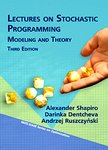
An accessible and rigorous presentation of contemporary models and ideas of stochastic programming, this book focuses on optimization problems involving uncertain parameters for which stochastic models are available. Since these problems occur in vast, diverse areas of science and engineering, there is much interest in rigorous ways of formulating, analyzing, and solving them.
This substantially revised edition
presents a modern theory of stochastic programming, including expanded and detailed coverage of sample complexity, risk measures, and distributionally robust optimization;
adds two new chapters that provide readers with a solid understanding of emerging topics;
updates Chapter 6 to now include a detailed discussion of the interchangeability principle for risk measures; and
presents new material on formulation and numerical approaches to solving periodical multistage stochastic programs.
Lectures on Stochastic Programming: Modeling and Theory, Third Edition is written for researchers and graduate students working on theory and applications of optimization, with the hope that it will encourage them to apply stochastic programming models and undertake further studies of this fascinating and rapidly developing area.
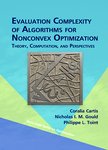
A popular way to assess the “effort” needed to solve a problem is to count how many evaluations of the problem functions (and their derivatives) are required. In many cases, this is often the dominating computational cost. Given an optimization problem satisfying reasonable assumptions—and given access to problem-function values and derivatives of various degrees—how many evaluations might be required to approximately solve the problem?
Evaluation Complexity of Algorithms for Nonconvex optimization: Theory, Computation, and Perspectives addresses this question for nonconvex optimization problems, those that may have local minimizers and appear most often in practice. This is the first book on complexity to
cover topics such as composite and constrained optimization, derivative-free optimization, subproblem solution, and optimal (lower and sharpness) bounds for nonconvex problems;
address the disadvantages of traditional optimality measures and propose useful surrogates leading to algorithms that compute approximate high-order critical points; and
compare traditional and new methods, highlighting the advantages of the latter from a complexity point of view.
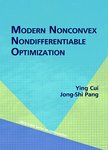
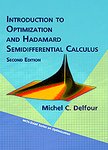
This second edition provides an enhanced exposition of the long-overlooked Hadamard semidifferential calculus, first introduced in the 1920s by mathematicians Jacques Hadamard and Maurice René Fréchet. Hadamard semidifferential calculus is possibly the largest family of nondifferentiable functions that retains all the features of classical differential calculus, including the chain rule, making it a natural framework for initiating a large audience of undergraduates and non-mathematicians into the world of nondifferentiable optimization.
Introduction to optimization and Hadamard Semidifferential Calculus, Second Edition:
builds upon its prior edition's foundations in Hadamard semidifferential calculus, showcasing new material linked to convex analysis and nonsmooth optimization;
presents a modern treatment of optimization and Hadamard semidifferential calculus while remaining at a level that is accessible to undergraduate students; and
challenges students with exercises related to problems in such fields as engineering, mechanics, medicine, physics, and economics and supplies answers in Appendix B.
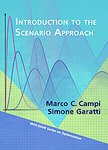
This book is about making decisions driven by experience. In this context, a scenario is an observation that comes from the environment, and scenario optimization refers to optimizing decisions over a set of available scenarios. Scenario optimization can be applied across a variety of fields, including machine learning, quantitative finance, control, and identification.
The scenario approach has been given a solid mathematical foundation in recent years, addressing fundamental questions such as: How should experience be incorporated in the decision process to optimize the result? How well will the decision perform in a new case that has not been seen before in the scenario sample? And how robust will results be when using this approach?
This concise, practical book provides readers with an easy access point to make the scenario approach understandable to nonexperts, and offers an overview of various decision frameworks in which the method can be used. It contains numerous examples and diverse applications from a broad range of domains, including systems theory, control, biomedical engineering, economics, and finance. Practitioners can find “easy-to-use recipes,” while theoreticians will benefit from a rigorous treatment of the theoretical foundations of the method, making it an excellent starting point for scientists interested in doing research in this field.
Introduction to the Scenario Approach will appeal to scientists working in optimization, practitioners working in myriad fields involving decision-making, and anyone interested in data-driven decision-making.

电话和邮箱必须正确填写,我们会与您联系确认。
版权所有:内蒙古大学图书馆 技术提供:维普资讯• 智图
内蒙古自治区呼和浩特市赛罕区大学西街235号 邮编: 010021

暂无评论